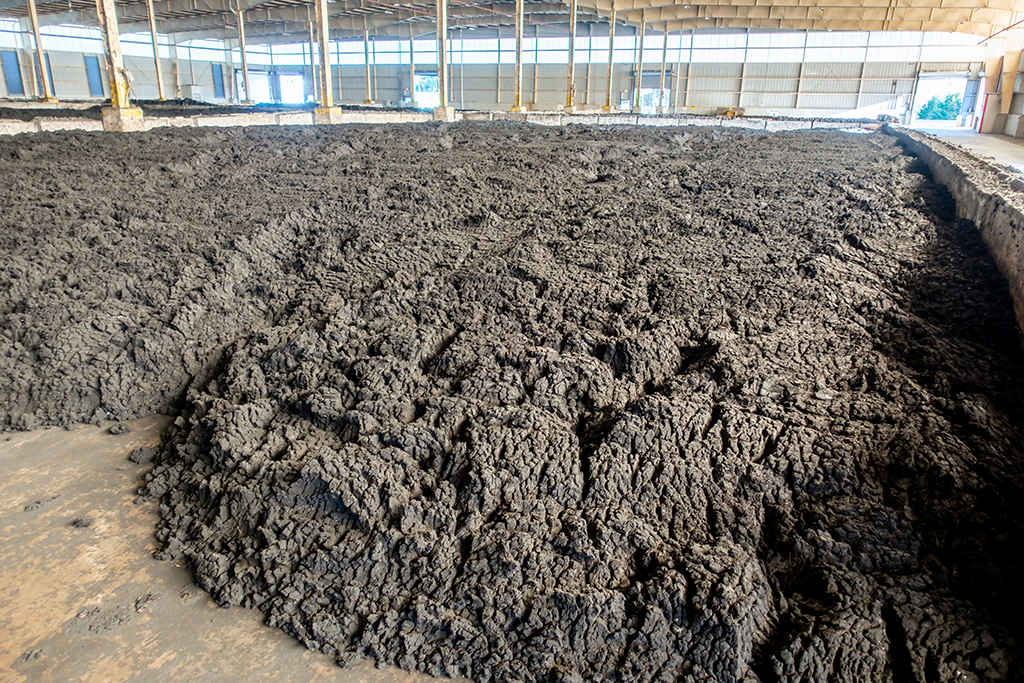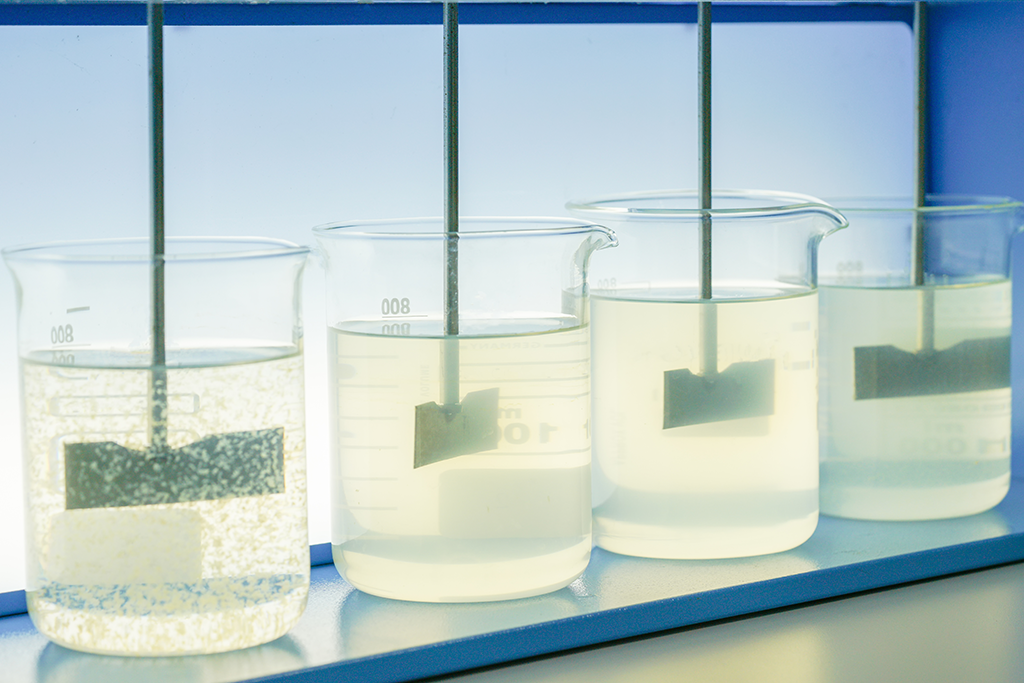Select Your Country/Region
Current Region:
 Global (EN)
Global (EN)
Choose a different country or region to see the content specific to your location
A wastewater treatment plant is a facility where wastewater is treated by the action of bacterias which digest dissolved organic matter through aerobic (oxygenation) and anaerobic processes.
The oxygen supplied to the bottom of the aeration basin meets the needs of the purifying bacterias.
The biological sludge recovered after settling in the clarifier is recirculated into the aeration basin to maintain a high concentration of bacteria.
After the flocs settle, the clear water can be discharged into the natural environment (e.g., into a river) or reinjected into an industrial process (e.g., for washing water).
The concentrated sludge portion is reduced to its maximum in terms of volume before being either valorized or incinerated.
Sludge dewatering involves separating the solid phase (consisting of organic matter such as microorganisms and waste resulting from their metabolism) from the liquid phase of the sludge.
To achieve optimal dehydration, it is necessary to first thicken the sludge. This thickening can be done naturally by settling at the bottom of the clarifier or by mechanical methods.
After thickening, the sludge remains in a liquid state with a dryness level of about 10%, meaning a water content of 90%.
The second phase, dewatering, is carried out mechanically, where water is "forced" to separate from the solid part. This mechanical dehydration results in a pasty sludge with a dryness level that can reach 40%, and up to 80% with solar drying.

Sludge extraction is necessary for the proper operation of wastewater treatment plants and for cost optimization. Indeed, if the sludge volume increases in the aeration basin, energy consumption for oxygenation will need to increase proportionally, thus raising operational costs.
For optimal purification efficiency, it's important to have bacteria of all ages, and if the sludge rate increases, the sludge age will also increase, leading to a decrease in purification efficiency.
Finally, if the sludge quantity increases too much in the basin, there is a risk of sludge discharge into the natural environment.

The goal here is to facilitate the separation of the liquid and solid phases through a preliminary conditioning of the sludge.
To achieve this, the sludge is mixed with polymers that ensure better separation between the solid and liquid phases.
Flocculants in aqueous solution mixed with the sludge will, thanks to their positive or negative charges, form bonds with the sludge particles.
These bonds, along with a very high molecular weight, help accelerate the liquid/solid separation and form flocs that can settle more quickly.
Depending on the type of sludge, a full range of polymers can be used, which will be charged positively or negatively depending on whether the sludge is more organic or mineral.
After this treatment step, the polymer-mixed sludge will undergo various treatments to extract as much water as possible.
The first step is sludge thickening, which can be done naturally at the bottom of the clarifier by settling (without flocculant) or mechanically on a drainage table, for example (with flocculant).
After this treatment, the sludge remains relatively liquid or pasty.

After thickening, the sludge is then poured between two rotating filter cloths that are progressively brought together to increase the contact pressure, allowing water to be removed through the cloths. The dehydrated sludge is recovered at the end of the belt filter for valorization.
The screw press also requires thickened sludge. The screw slowly turns within a perforated cylinder, gradually compressing the sludge, a compression made possible by the formation of a dehydrated sludge plug at the screw's outlet. The water extracted from the sludge percolates through the perforated cylinder to return to the head of the plant.
Centrifugation involves applying a centrifugal force to the sludge to accelerate its settling, resulting in two phases: the sediment (dehydrated sludge) and the centrate (supernatant liquid). The material deposited on the inner wall is continuously scraped off by a rotating screw.
The plate filter press is the most efficient mechanical filtration and dehydration process that allows dryness levels of 30 to 80% to be achieved. It is used for the dehydration of sludge from industrial and urban effluents.
Geotubes are made from a specially designed textile that confines fine solids inside the "sack" while allowing water to percolate through the textile. As the water flows out, the solids continue to densify and consolidate over time.
The Dosatron D25WL product family is the ideal solution for injecting liquid polymer in small wastewater treatment plants (5.000 PE) or mobile units.
D25WL2 units are easy to install and require no electrical power to operate. They are even compatible with outdoor installations. External injection for easy maintenance.
Installed with its "Mixer", the D25WL provides maximum homogenization of the water/polymer mixture, optimizing separation of solid and liquid particles.
Dosatron technology and its polymer dosing pump ensure homogeneous mixing of the polymer with the dilution water, and of the diluted polymer with the sludge.
Depending on the process, it can avoid using a specific polymer preparation system, thus saving money and space.
This range can be used to treat sewage sludge, but it is important to note that its use will depend on the nature of the sludge and the chemicals used, as well as the specifications and requirements of the treatment system. It is recommended that you refer to the instructions in the user manual and to current standards to ensure that this product is suitable for your application, and that its use is safe and complies with environmental regulations.